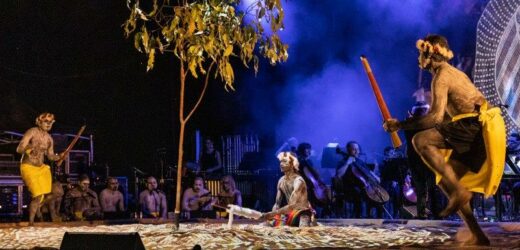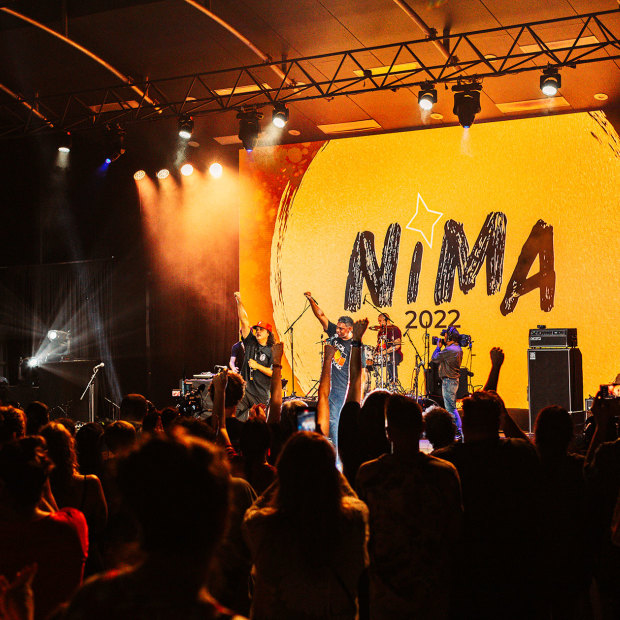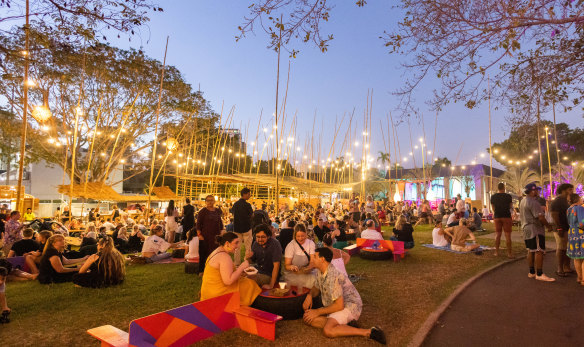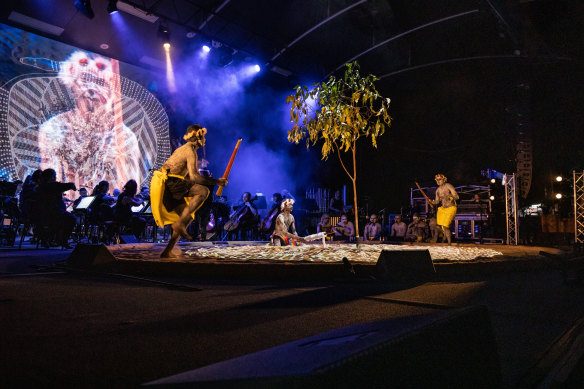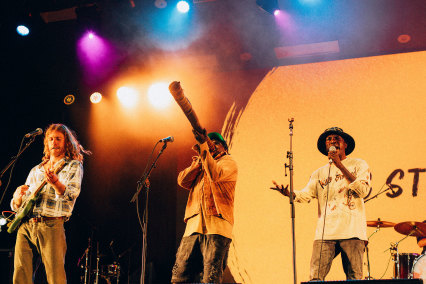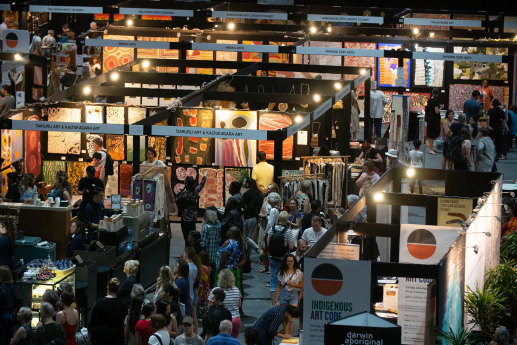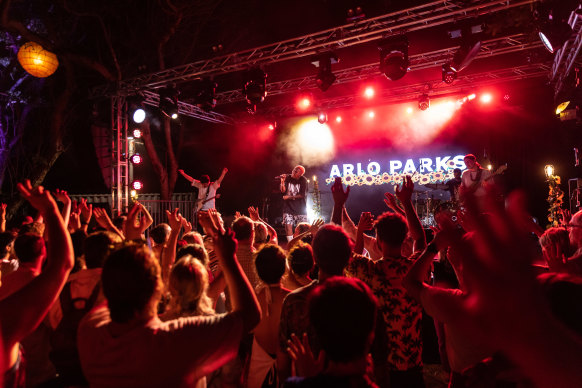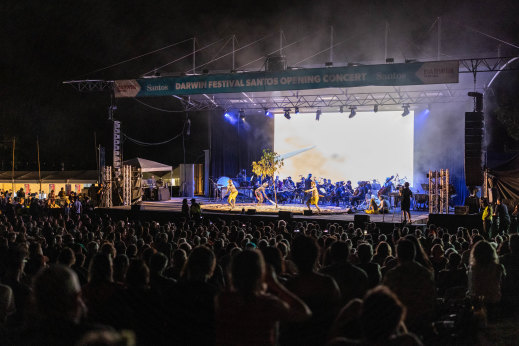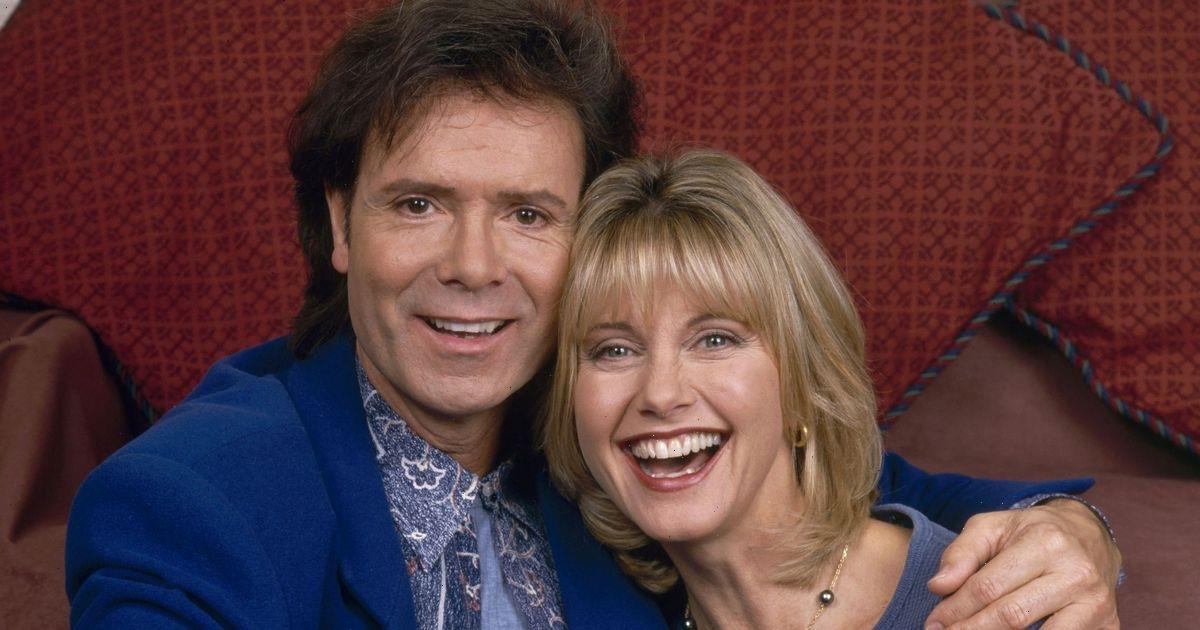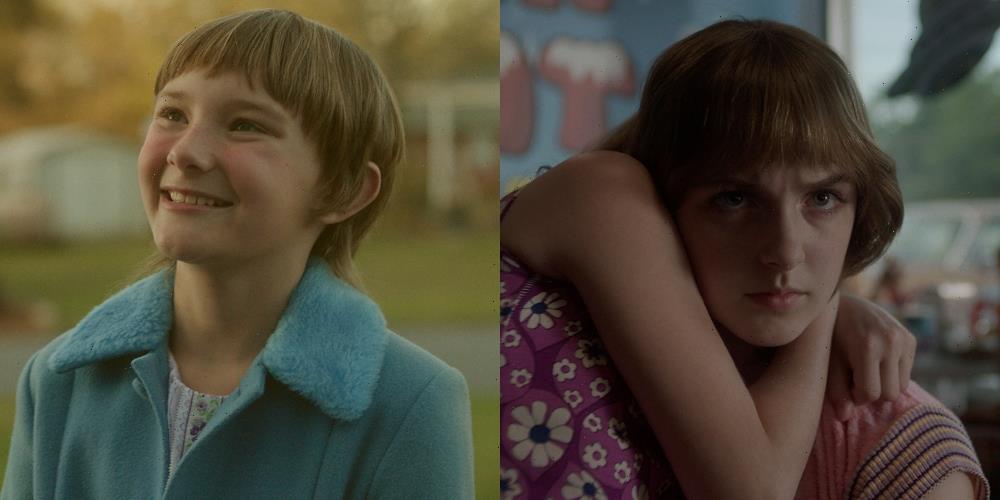By Meg Watson
Rapper Birdz and Butchulla songman Fred Leone perform at the National Indigenous Music Awards 2022.Credit:Mitch Fresta
The music line-up includes Arlo Parks, Jaguar Jonze and Tropical F— Storm. There’s theatre, comedy, dance and visual art on show. It’s a sunny 31 degrees each day and there are no muddy mosh pits in sight.
Darwin Festival, which returned in full force this past weekend after two years of COVID-19 disruptions, is becoming an increasingly popular proposition for interstate arts lovers.
While the 18-day event, held on Larrakia country, has always offered those from the south an opportunity to escape the cold, six years of diverse programming under outgoing artistic director Felix Preval and two years of Australians dreaming up new domestic travel plans in various lockdowns has resulted in a growing buzz around the festival, which is now in its 43rd year.
Festival Park during the opening weekend of Darwin Festival 2022.Credit:Helen Orr
The number of interstate visitors has been steadily increasing year-on-year, with 2021 drawing the festival’s second-highest number of attendees on record, despite the fact many major events had to be held online and the territory was thrust into a snap 72-hour lockdown during the final week.
It’s quite a feat for a festival which, in 2016, looked to be on the ropes. Citing funding cuts and falling ticket sales, the festival fell $400,000 into the red and sacked its entire board just two months before gates opened.
While attendance figures are not yet known for the 2022 event (which runs until August 21), both crowd numbers and general spirits were high during the opening week.
On Thursday night, more than 4500 people gathered on a patchwork of picnic blankets at Darwin Amphitheatre for a historic performance of Buŋgul. An exploration of the songs, dance and art behind Dr G Yunupingu’s album Djarimirri (Child of the Rainbow), the ambitious and unique show featured live performances from the Darwin Symphony Orchestra alongside Yolŋu dancers and songmen.
Though the work has been performed at interstate festivals to much acclaim, this was its premiere in the Northern Territory. And it was also the first time it’s been performed outdoors, with free admission making it a true community event.
Yolŋu dancers perform with the Darwin Symphony Orchestra in Buŋgul.Credit:Helen Orr
Members of Dr G’s family were in the audience; local teens sometimes approached the stage, cheering and speaking in language with the dancers; and the music was accompanied by the sound of kids joyfully squealing, running down the grassy slope to the side of the stage.
This spirit was also felt at the National Indigenous Music Awards on Saturday night, where thousands gathered to celebrate the best in First Nations music, pay tribute to Dr G and the recently departed Gunditjmara-Bundjalung songman Archie Roach, and catch performances from acts including Birdz, Marlon x Rulla, Bumpy and King Stingray.
The love for Yolŋu surf-rockers King Stingray, who are territory locals from North East Arnhem Land, was palpable at both this event and around town. With the band’s debut album dropping last Friday and their merch now being sold through Cotton On, every second person on the streets of Darwin (including Northern Territory Arts Minister Chansey Paech) was wearing a t-shirt with their name on it.
But the Darwin Festival is also a celebration of First Nations art from all around the country. The first week of the festival hosts the National Indigenous Fashion Awards, the exhibition of the National Aboriginal and Torres Strait Islander Art Awards (which continues through the festival) and the Darwin Aboriginal Art Fair (DAAF).
One day after the release of their debut album, King Stingray were a crowd favourite at the NIMAs.Credit:Mitch Fresta
DAAF is an extraordinary market of more than 1500 Indigenous creators’ works from more than 75 art centres. Not just for serious art collectors, the fair consists of stalls selling original canvases, cloth, clothing, pottery, jewellery and more. It’s a rare opportunity to buy First Nations art straight from the source (which ensures the work is authentic, and the money is distributed fairly to the creators) and also survey the full scope of traditional and contemporary work being made around the country.
Outside these big marquee events, the festival is a choose-your-own-adventure. Opening weekend featured everything from Waŋa (a funereal Indigenous ballet from the NT Dance Company) to Vidya Rajan’s wonderfully weird alt-comedy hour Respawn and Mitch Jones’ darkly comedic one-man show AutoCannibal (which, despite receiving mostly positive reviews, is a tough watch if you’re not keen on body horror and/or watching a man having simulated sex with a garbage bag).
Each stall at DAAF is staffed by people from First Nations art centres around the country. Credit:Dylan Buckee
The majority of the theatre and comedy shows have been cherry-picked from previous showings around the country, which is great for Territorians (who often don’t get access to east coast acts) but can be a trickier sell for interstate audiences.
If you’re travelling from Melbourne, for instance, you might have already seen Respawn at the comedy festival and AutoCannibal during its run at Theatre Works. And that could make it difficult to justify the airfare (which has been so inflated recently Preval even joked about it in his opening night speech).
One boon for the festival, however, was securing the first show of Arlo Parks’ Australian tour. The 22-year-old British indie pop star won the Mercury Prize last year for her debut album Collapsed in Sunbeams and was nominated for best new artist at the Grammys.
On Sunday night, she performed a dreamy set to a sold-out crowd at the Sunset Stage in Festival Park – a gorgeous outdoor venue, next to the expansive festival hub which hosted more than 5000 visitors each night.
Arlo Parks performs at Darwin Festival 2022.Credit:Helen Orr
The crowd here, and at the festival generally, was a really mixed bag. Shows at the Sunset Stage were full of both older and younger audiences dancing together, with enough space to feel COVID-safe and room around the edges for mothers to comfortably breastfeed. Attendee figures from previous years show a relatively even split across all age groups from 25-74.
Suitably, from 10pm to 2am, the venue hosts a $15-entry open-air party called Club Awi – “awi”, crowds are told on the Friday night, means “everyone” in Tiwi language.
Like many events at the festival, it’s a welcoming environment with an accessible price point. But that accessibility does have a cost. The opening night performance of Buŋgul, for example, was offered free of charge due to a long-standing sponsorship deal with gas and oil company Santos.
There has been a campaign from some artists and First Nations people against this partnership for some time; and earlier this year a petition calling on the festival to drop Santos as a sponsor attracted more than 3500 signatures. When Preval thanked the sponsor on stage, there were some scattered boos from the back of the amphitheatre.
There has also been criticism over a clause in artists and producers’ contracts which prohibits them from disparaging the festival or its corporate sponsors. It’s a particularly uncomfortable situation as contemporary artists increasingly confront the climate crisis. At least two shows during opening weekend tackled this topic – one of which took a direct shot at Adani and, broadly, the efforts of “oil CEOs” to appear socially progressive.
If the festival keeps growing and attracting new audiences, any fossil fuel sponsorship will no doubt come under greater scrutiny. It’s happening at all sorts of events and institutions, and is what led to Perth Fringe World dropping Woodside as a principal sponsor (which included naming rights for the festival hub) last year.
Santos was featured heavily on the banner above the stage on opening night.Credit:Helen Orr
Darwin Festival has certainly earned that increase in attendees, though.
As the festival board’s chair, Ian Kew, said at a private event on opening night, this is a festival which has been “resurrected”. Its curation and celebration of First Nations culture is unparalleled, the programming is fun and diverse, and it’s a great example of a smaller, well-run event that really seems to enrich and benefit the local community (especially appealing after the carnage of this year’s Splendour in the Grass).
With new artistic director Kate Fell (fresh from a tenure at the Brisbane Festival) taking over next year, the questions will be: How do you keep this good thing going? And how big can it get before it loses its charm?
Meg Watson travelled to Darwin and was hosted by Darwin Festival, with support by Tourism Australia through the Regional Arts Tourism Package.
A cultural guide to going out and loving your city. Sign up to our Culture Fix newsletter here.
Most Viewed in Culture
Source: Read Full Article
